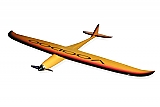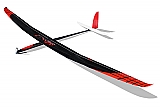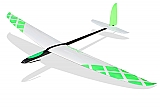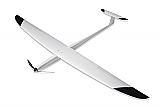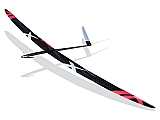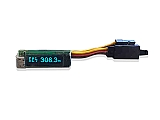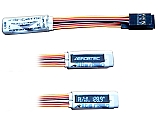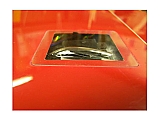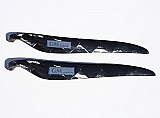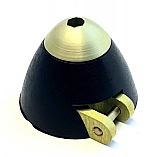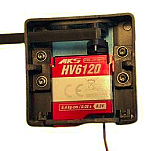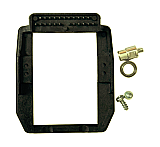El Niño F5J 3.9M
Compared to most F5J models the El Niño F5J 3.9M has a 10% higher aspect ratio and the 11 wing sections are developed specially for a light 12g/dm2 airplane. Wing section at the root is 7% thick stepping down to 5.4% at the tip.
-
Wingspan154.7 in (3.93 mm)
-
Wing Area1116 sq.in. (72 dm²)
-
AirfoilSynerJ, thinned. lower camber
-
Weight33.16 oz (940g) norm 1000~1100g
-
Motor typeNeu 1102/3y/6.7
-
Battery config3s LiPo
-
SpecificationTail Area: 137 sq.in. (8.8 dm²)
-
Maximum Current50 amps
-
El NinoEl Nino, El Nino Strong
El Niño F5J 3.9M
This is a very high performance F5J competition sailplane, from designer and manufacturer Alex Hoekstra.
This all-new, computer-optimized F5J sailplane promises to be a world-beater. It indicates the lightest lift and turns better than most older F5J designs, almost as if you will it to turn and it responds. Though the El Nino is built very lightly and has a thin, high aspect ratio wing (21.45:1), it is strong enough for almost any situation, and boy does it penetrate a stiff breeze! No-ballast downwind returns are just not a worry.
Unique to El Nino (compared to other F5J models) is its 10% higher aspect ratio. The wing sections were developed specially for a lightweight, 12g/dm2 (3.93 oz/sq.ft.) airplane. Its wing section at the root is just 7% thick stepping down to 5.4% at the wing tip. A total of 11 wing sections were developed to achieve this result. A slight amount of wingtip washout assures you a tip stall resistant, easy and predctable, high-alpha thermal turn.
Rather than using more common solid-foam cores, El Nino's wing is hollow-molded. The manufacturer believes this is the only way to avoid the surface finish deteriorating with time, temperature flux, and sunlight exposure due to underlying expanded-bead foam cores. The front part of the wing incorporates a D-box to improve the torsional rigidity.
Wing strength is on par with other very lightweight models. Wing construction: outer laminate is 40 gram carboweave with a doubler in the D-box and some extra reinforcement in the root and at the end parts. Rohacell 30 sheet. Inside laminate: a single layer of 20 gram Carboweave. Spar: 15 12K rovings at the root to 3 at the tip, top and bottom. Some roving in the leading edge. Wing is strong enough for gentle loops and rolls.
Both the wing and the horizontal stabilizer are pylon mounted to reduce interference drag in these critical areas. The pylons are very slim and well faired. The tailplane is of Rohacell/Carbon construction with a glassy finish despite its 0.85 ounce (24 gram) weight. The fin/rudder slides onto the end of the tailboom in a way that assures perfect alignment. The truly lightweight, 0.599 ounce (17 gram), vertical stabilizer assembly only requires the rudder horn to be attached to complete its assembly.
The fuselage features a molded firewall. If you anticipate less than gentle landings, you may wish to reinforce the firewall with a 2 mm glass or carbon fiber backing. Some choose not to reinforce. The fiberglass canopy hatch is fastened by carbon fiber pegs in the front and rear. Removing the canopy reveals a tight area for the powertrain, battery and receiver. Careful planning and fitting will be required. Slightly heavier powertrain and battery or nose ballast may be required to achieve the required CG due to a relatively short nose moment.
El Nino does not come as completely finished as does an Xplorer or Ultima. as such it is probably not the best choice for a beginning model builder.
Give us a call or e-mail us with any ordering or technical questions, we'll be happy to help you make the right equipment choices.
Recommendations:
Motor: NeuMotor 1102/3Y/6.7 (P29)
Prop: RFM 14x8
Battery: Tattu Battery 850mAh 3S 75C Lipo
-
Call for availability
-
Call for availability
-
Call for availability


